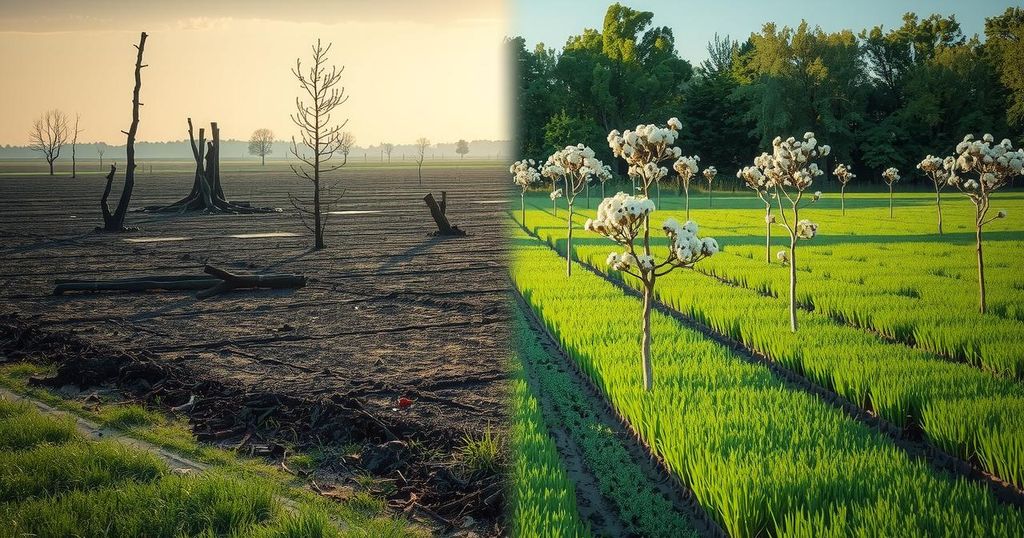Less than a year following Bolivia’s worst wildfires, farmers must choose between continuing to burn land for agriculture or planting trees to counter increasing droughts. Approximately 10.7 million hectares of forest were destroyed last year, resulting in significant fatalities and carbon emissions. The choice they face is critical for ecological and agricultural sustainability.
In the aftermath of the most devastating wildfires in Bolivia’s history, farmers in the eastern lowlands are confronted with a critical decision. They must choose between continuing the practice of igniting fires to clear land for agriculture or adopting tree planting as a strategy to alleviate the impacts of worsening drought conditions. This choice holds significant implications for both the environment and agricultural viability in the region.
Last year, approximately 10.7 million hectares (26.4 million acres) of Bolivia’s dry tropical forest, an expanse comparable to the size of Portugal, succumbed to flames. This data is supported by the Bolivian Institute for Forest Research (IBIF), which highlights the extensive damage inflicted upon the ecosystem. Despite receiving less international media attention compared to wildfires in Brazil, the fires in Bolivia resulted in the tragic loss of at least four lives and generated historic levels of carbon emissions, as reported by the European Union’s climate monitoring agency.
The decision facing Bolivian farmers is pivotal, impacting both their livelihoods and the environment. With catastrophic wildfires having devastating effects on the ecosystem, a transition towards tree planting could offer a sustainable solution to combat drought while preserving vital forest resources. While the urgency of the situation is evident, the choice between agricultural clearing practices and reforestation efforts must be approached with careful consideration and commitment to long-term ecological health.
Original Source: www.ashleycountyledger.com




